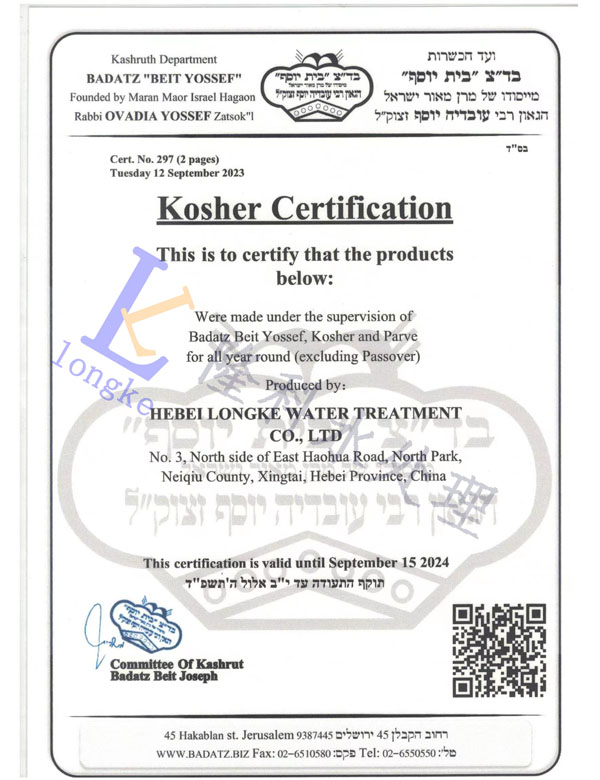what is poly aluminum chloride
What is Poly Aluminum Chloride?
Poly Aluminum Chloride (PAC) is an inorganic polymer compound with a complex structure that serves a multitude of applications, primarily in water treatment processes. As a highly effective coagulant, it plays a crucial role in removing contaminants from water and wastewater. Understanding PAC's composition, functions, and uses is vital for recognizing why it has become a staple in the field of environmental management.
Composition and Properties
PAC is synthesized from aluminum chloride and aluminum hydroxide, which may vary in their molar ratios. This formulation results in a product that is part of the family of aluminum-based coagulants, characterized by its high charge density and polymeric structure. The composition can influence its properties and performance in different applications. Generally, PAC is more efficient than traditional aluminum sulfate due to its higher molecular weight and charge neutralization qualities.
The pH, molecular weight, and polymerization degree are significant properties that can vary with production methods. These factors directly affect how PAC interacts with colloidal particles in water, making it a versatile option for various treatment scenarios.
Mechanism of Action
The coagulation process is pivotal in water treatment, as it facilitates the aggregation of small particles into larger flocs that can be easily removed. When PAC is added to water, it generates aluminum ions that neutralize the negative charges of suspended particles and colloids. This neutralization allows these particles to come together and form flocs, which can then be separated through sedimentation or filtration.
In addition to its coagulation capabilities, PAC can also aid in the removal of heavy metals, microorganisms, and organic matter, making it invaluable in processes that aim to enhance the quality of drinking water and treat industrial effluents.
Applications
PAC is widely employed in various sectors due to its effectiveness and versatility
what is poly aluminum chloride

1. Water Treatment The primary application of PAC is in municipal drinking water treatment plants where it is used to clarify water by removing turbidity and harmful microorganisms. Its ability to function effectively under a broad range of pH conditions adds to its utility.
2. Wastewater Management PAC is frequently used in treating industrial wastewater, as it can effectively remove heavy metals and organic pollutants. Its efficiency in reducing organics helps meet regulatory standards for discharge.
3. Paper Industry In papermaking, PAC acts as a retention and drainage aid, enhancing the efficiency of the production process while improving the quality of the finished product.
4. Civil Engineering PAC is also utilized in soil stabilization processes, where it can improve the physical properties of soil, making it more suitable for construction projects.
5. Food Industry Its application extends to the food and beverage sector, where it can be used for the clarification of juices and other liquid products, ensuring they meet quality standards.
Environmental and Safety Considerations
While PAC is recognized for its effectiveness, considerations regarding its environmental impact are essential. It is crucial to apply PAC in controlled amounts to prevent excessive aluminum levels in treated water, which can pose health risks. The product generally has a favorable safety profile, but proper handling and disposal of PAC and its residues are necessary to mitigate any negative environmental effects.
Conclusion
In summary, Poly Aluminum Chloride is a multifunctional coagulant that has established itself as a vital component in water treatment, wastewater management, and various other industrial applications. Its effectiveness in removing impurities and enhancing water quality makes it invaluable in efforts towards sustainable environmental management. Understanding its mechanisms and applications continues to be essential for professionals in environmental science and engineering disciplines.
-
Premium Isothiazolinones | Broad-Spectrum Biocidal SolutionsNewsAug.28,2025
-
LK-319 Special Scale And Corrosion Inhibitor For Steel Plants: Advanced Solutions for Industrial Water SystemsNewsAug.22,2025
-
Flocculant Water Treatment: Essential Chemical Solutions for Purification ProcessesNewsAug.22,2025
-
Isothiazolinones: Versatile Microbial Control Agents for Industrial and Consumer ApplicationsNewsAug.22,2025
-
Scale Inhibitor: Key Solutions for Water System Scale PreventionNewsAug.22,2025
-
Organophosphonates: Versatile Scale Inhibitors for Industrial Water SystemsNewsAug.22,2025





